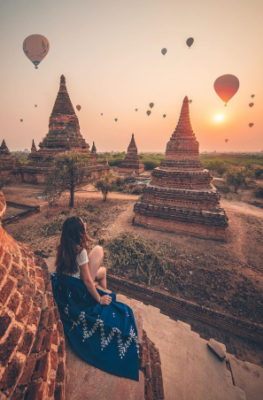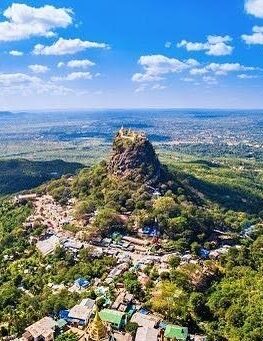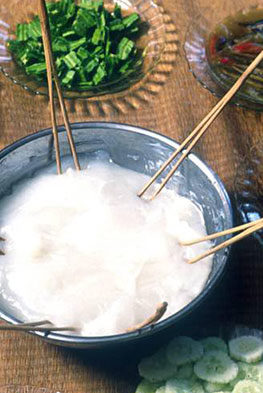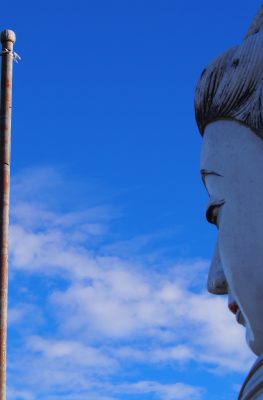Published on November 3, 2014
Myanmar, a rapid developing tourism country with lots of authentic natural features and cultural artifacts attractive to tourists, offers an array of festivals. Thus, many traditional festivals are awaiting those who long to visit this country having been off the beaten tourist track for decades.
Although celebrations are held throughout the year, such as the largest Buddhist feast of the country, Phaung Daw Oo Pagoda Festival at Inle Lake or the Kyaukse Dancing Elephant Festival, near Mandalay, special reference should be made to two festivals happening in the coming months. Quite a nice coincidence you just intended to go during this period, isn’t it?
The first of the ‘winter’ fiestas, the Kachin Manaw Festival, takes place early January in Kachin, one of Myanmar’s seven states – notably in the villages of Myitkyina and Putao. During the 7 days of this delightful Fete, local hill tribes (aka the Scots of Myanmar) – such as the Kharku, Thaisan, Lacheik, Rawang, Thaikhamt and Lisu – beautify themselves with their best customary costumes and dance around poles. Those Manaw poles, towering over the dancers, have been raised at the center of the festival ground and are painted in traditional, colourful patterns.
The festival focuses on showing gratefulness to ancestral spirits and praying for future affluence. It’s also the celebration of the New Year, of victory in battles, and a reunion of the tribes, as well as for housewarming and the commemoration of the death of an elder. The ceremonies are very expensive as everyone is invited. The feasts need months of preparation to ensure enough food for the guests. The dishes will include buffalo meat, pork or wild boar, beef, chicken, rice and pots and pots of rice wine. In the past Kachin Manaw attracted more than 300,000 visitors and participants.
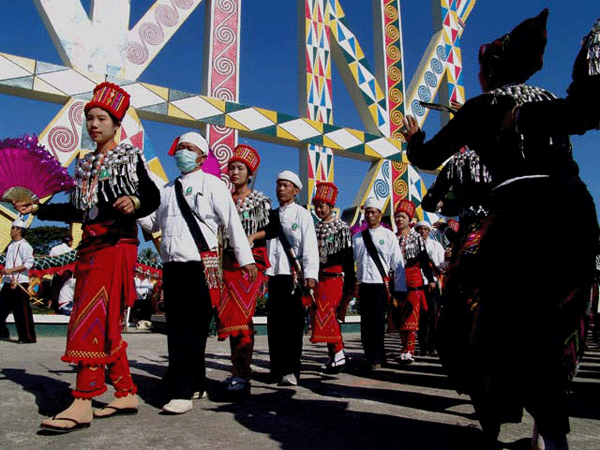
Ethnic Kachin people escorting a totem pole at the Kachin Manaw festival.
Source: www.allthingsburma.com
The second fiesta to be singled out, the Shin Pyu Ceremony can be witnessed throughout the nation, at various times during the year, though the months of February, March and April are very popular, in particular. It regards a ceremony where young male Buddhists become novice monks (“Shin Pyu” in Myanmar means “initiating into Buddhist Order as a Novice”).
It’s dating back to the time of the Buddha, some 2,500 years ago, when He granted His son Rahula the heritage of becoming a novice. Nowadays the occasion is associated with much show, while charity feasts are held for invited guests and relatives. The procession begins as the boys ride the adorned horses – sheltered by gold-plated parasols and escorted by parents, family, friends and acquaintances – to a spirit home (locally known as ‘nat’) where prayers and holy rites are held. Since the whole function is a re-enactment of the initiation of Prince Rahula, the would-be novice, called a ‘shin laung’ has to dress like a member of the royalty of those days. Later in the day the boys are ordinated – including having their heads shaven – after which the fresh novices must stay in the monastery for at least 7 days, under the care of the live-in monks.
Families earn great merit when a son pulls on the robe of the monk, even if he does not remain in the order long enough to take his preordained oaths. Since only boys can become neophytes, parents unsurprisingly wish to have at least one son in the family. Therefore, those who have no male descendants, very often initiate the sons of others who cannot afford to do their own.
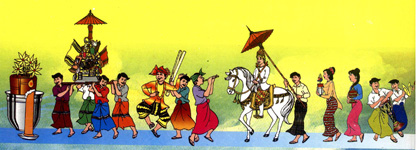
Shin Pyu Samanera ordination in traditional style; Source: www.parami.net
If these festivals have stimulated your cultural taste buds, you might wish to return in October to attend the very out of the ordinary Dancing Elephant Festival, marking the end of Buddhist Lent. The actual performers are not the elephants themselves, but teams of two men each in huge elephant costumes – made from bamboo and paper – who dance together in rhythm to the accompaniment of two-faced (‘dobat’) and one-head drums. The extravagant elephant costumes can take months to make, since they are bedecked in glitter, gold foil, satin, ribbons, and glass gems.
The elephant dancers circle three times at the foot of a hill to pay homage to the Shwe Tha Lyaung Pagoda. The festival lasts all day and includes both a parade and a dance competition; participants are judged on their dancing, costume design, and the music and singing involved.
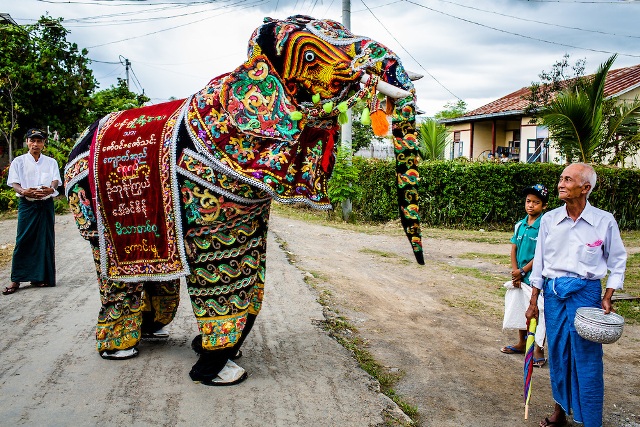
Dancing Elephant Festival, Kyaukse, Myanmar; Source: www.quinnmattingly.photoshelter.com
If you plan it right, you even can combine Shin Pyu with the aforementioned Phaung Daw Oo Pagoda festival and one of the Festivals of Light, Tazaungdine & Thadingyut. But that’s another story…
Burma’s Winter and Autumn Festivals: highly recommended to the discerning traveller.



